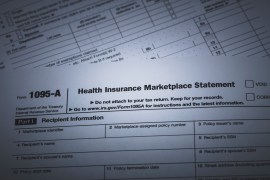Letters to the Editor is a periodic feature. We welcome all comments and will publish a selection. We edit for length and clarity and require full names.
The demand for skilled nurses during the pandemic is through the roof! Travel nurses command a hefty salary and they are worth every penny… #COVID19 #pandemic #RN https://t.co/gYQpkHqaoX
— Talmage Egan, MD (@UofU_Anes_Chair) November 26, 2020
— Dr. Talmage Egan, Salt Lake City
Nurses Deserve to Be Paid Handsomely
I read your article “Need a COVID-19 Nurse? That’ll Be $8,000 a Week” (Nov. 24) in the Springfield Journal-Register. It was an interesting article as I have a daughter who is a nurse. Nurses have been underpaid and unappreciated for years. It made me angry that the article characterized the wages some hospitals are willing to pay for nurses as exorbitant. Hogwash if you think someone should risk their life every hour of the day to care for COVID patients without proper compensation. How many doctors make over a million a year? You don’t cite that as unusual. I feel that nurses should go for the gold as they have been taken advantage of for years and, too bad, but good for them. Choose your words more carefully in the future. Nurses ROCK!!!!
— Mike Booher, Lincoln, Illinois
Hospitals go out of their way to avoid competing for nursing labor by raising wages. Now hospital executives and public health advocates act like it's a travesty that COVID nurses are finally getting paid market rates to take on risky jobs. https://t.co/6z0idToVn6
— Devon M. Herrick (@DevonHerrick) November 24, 2020
— Devon M. Herrick, Dallas
Missing in the Mix of Vaccine Coverage
I must note two important omissions in the article “Time to Discuss Potentially Unpleasant Side Effects of COVID Shots? Scientists Say Yes” (Nov. 12). First, although these were interim trial results, the placebo arm should also have been reported out. What was the placebo infection rate? Reporting 90% effectiveness is irrelevant without reporting the placebo rate simultaneously. And one needs to align the infection rate in trial subjects with the incidence of disease in the U.S. population. They should be similar, but if not, any discrepancy must be explained (such as, no elderly people or children participating in the trial). Secondly, and perhaps more important: What other mitigating measures were volunteers in this trial required/advised to take? For example, physical distancing, masks, etc. I could find no mention of this, positively or negatively, when reading the protocol on clinicaltrials.gov. Any vaccine alone could not provide 94.5% efficacy. To determine the relative contributions of other measures, you’d need, say, a four-arm study — placebo with mask, placebo without mask, vaccine with mask, vaccine without mask. Statistically and clinically, one must account for other variables that may confound an apparent result.
This is a crucial point as the lay public is thinking that, by getting the vaccine, masks might no longer be necessary and they’ll have a 95% chance of not being infected. This is rubbish. The media and the public “experts” need to address this as they are setting themselves up for an immense PR failure and still greater skepticism. People may need to wear masks for many more months, maybe years, even with an effective vaccine.
— Stephen Zaruby, Truckee, California
I'm already confused 😕 https://t.co/UlJPh2EEvK
— hameen tariq (@hameentariq) November 23, 2020
— Hameen Tariq, Wilmington, Delaware
Exploring Cancer Drug’s Effects on COVID
Your story “Clots, Strokes and Rashes: Is COVID a Disease of the Blood Vessels?” (Nov. 13) was reprinted in my local newspaper. My brother, James L. Kinsella Ph.D., led the original work at the National Institutes of Health researching how the chemotherapy drug Taxol could reduce inflammation in coronary articles following the placement of coronary stents. This led to the very effective use of drug-eluting coronary stents. My unprofessional musing causes me to wonder if this anti-inflammatory response to Taxol might have some application as an early therapeutic intervention to reduce the inflammatory response of COVID-19 being studied by Dr. William Li. I can’t ask my brother; he passed away.
— Rick Kinsella, Oneida, New York
He wouldn’t be dead without covid. We’ve learned that things that aren’t life threatening are made life threatening by this disease. It attacks your blood vessels so it can exacerbate anything anywhere in your body that uses blood vessels. Stay safe indeed https://t.co/BFsqrKSFmH
— James McPicnic (@WhiteRatbit) December 3, 2020
— James “J.P.” McPicnic, Los Angeles
Women’s Health Should Not Be Up for Debate
Birth control medication is so much more than a pawn in politics (“Coming Abortion Fight Could Threaten Birth Control, Too,” Nov. 5). It changes the lives of so many women for the better. Birth control access has been proven to lead to higher rates of education for women, lower levels of child poverty, lower Medicaid costs for women’s health and higher productivity of society as a whole. It also treats a large number of medical conditions associated with women’s health. It effectively treats severe menstrual migraines, hormonal acne, endometriosis, severe menstrual pain, uterine abnormalities, anemia and heavy menstrual bleeding, among other health conditions. This medication is involved in treating so many women’s health concerns, improves infant and child health outcomes, and reduces child poverty, and yet almost 20 million women in the U.S. currently have no access to birth control medication. American politicians need to consider, if nothing else, the spillover costs to society when birth control access is reduced.
Women’s reproductive health should not be up for debate and yet it is at the center of so many political agendas. As a 24-year-old woman pursuing dual master’s degrees in public health and physician assistant studies, my focus should be on learning to become an exceptional health care provider, not whether my health will be up for debate in court. If politicians truly have the best interests of Americans at heart, they should be looking to expand birth control access, not restrict it. Evidence needs to be incorporated into political agendas, and the evidence shows that when women succeed, society succeeds. Women’s education, health and reproductive rights should be at the forefront of every discussion on what constitutes a thriving population — the evidence has proven that women’s autonomy holds the answer and access to birth control is a vital piece of that.
— Gabby Henshue, Madison, Wisconsin
Scary times for women’s bodies.
“States could effectively ban contraception by arguing that some contraceptives act as abortifacients.” Threat is real. I’ve worked in states where this argument has been made.https://t.co/LmdWFRUNOZ
— Elizabeth M. Baskett (@EMBaskett) November 11, 2020
— Elizabeth M. Baskett, Denver
Injustice in High Gear
I was appalled at the charges on the medical bill from the Carson City emergency department for that child who fell off his bike (“Bill of the Month: After Kid’s Minor Bike Accident, Major Bill Sets Legal Wheels in Motion,” Nov. 25) — $18,000 for an exam and stitches? What would it take to sort out such problems in our health system? Lower prices from providers could only result in lower insurance premiums.
— Karen Johnson, San Rafael, California
https://twitter.com/attyannie/status/1331651779608580097?s=20
— Annie M. Davidson, St. Paul, Minnesota
KHN Morning Briefing: A Wealth of Information in One Spot!
I just wanted to say it is awesome to have portions of articles from many major news outlets because never does one tell the whole story. Case in point: I was trying to research what exactly President Donald Trump had done that “allowed doctors to discriminate against LGBT people,” and it was very helpful having a wide array of media sources on a single page to help get the bigger picture and try and weed through the bias of all of them (“Trump Administration’s Expanded Conscience Rule Will Allow Medical Professionals To Refuse To Provide Health Care Services,” May 3). Just sending my compliments. Keep up the great work.
— Nolan Steeley, Greensburg, Pennsylvania
💥Racism in #healthcare undermines #quality of care and patient safety. There’s hard work to be done to weed it out of all parts of society, especially clinical care. https://t.co/TbK0yIuraB
— Natalie S. Burke (@natalie4health) November 28, 2020
— Natalie S. Burke, Washington, D.C.
Education and Coverage Gaps Lead to Avoidable Amputations
Coming to terms with systemic racism in health care is long overdue (“What Doctors Aren’t Always Taught: How to Spot Racism in Health Care,” Nov. 17). The way medicine is taught and the payment policies that shape the system have created persistent disparities in patient outcomes across racial and ethnic groups.
As a result, Black Americans are 80% more likely than whites to be diagnosed with diabetes and are twice as likely to die from the disease. Furthermore, Black American patients are up to four times more likely to experience an amputation than their white counterparts due to advanced peripheral artery disease (PAD), a common complication for people with diabetes and other chronic conditions. Similarly, Latinos are up to 75% more likely to experience an amputation than whites, while Native Americans are twice as likely to lose a limb.
As many as 85% of the nation’s 200,000 non-traumatic amputations could be prevented with access to screening and early detection. By screening for PAD through non-invasive arterial testing, the likelihood of an individual needing a PAD-related amputation can be reduced by up to 90%. Unfortunately, too few Americans — particularly racial and ethnic minorities — are even offered routine screening for PAD due to a widespread lack of understanding about the disease, as well as structural coverage barriers to simple, painless tests. As a result, many do not even know they have the disease until it is too late to save their limbs.
Communities of color deserve better. Members of the Congressional PAD Caucus — led by Rep. Donald Payne Jr. (D-N.J.) — recently introduced the Amputation Reduction and Compassion (ARC) Act to establish an education program about the disease — particularly for high-risk populations — and update reimbursement policy to disallow payment for non-emergent amputations unless arterial testing has been done in the three months before amputation. These simple solutions have the power to prevent thousands of avoidable amputations, and begin to correct health disparities in minority communities.
While we still have a long way to go as our country continues to grapple with systemic racism in health care, the ARC Act represents an important step toward ending disparities in PAD care.
— Dr. Foluso Fakorede, CEO of Cardiovascular Solutions of Central Mississippi, Cleveland, Mississippi
Racism in Health Care? Another example of injecting Politics. Inarguably, racism exists everywhere, but to make this a big issue is a disservice. Diff DX requires inclusion of Race/Ethnicity, to wit: Sickle Cell in Blacks,Alpha & Beta Thalassemia in Asians https://t.co/xyP54dPjH8
— Alexander R. Lim, MD (@AlexanderLim13) November 25, 2020
— Dr. Alexander R. Lim, Corpus Christi, Texas
‘Obamacare’ Unfairly Politicizes Health Law
I found this article interesting (“Biden Plan to Lower Medicare Eligibility Age to 60 Faces Hostility From Hospitals,” Nov. 11) but was surprised that the Affordable Care Act was referred to as “Obamacare.” Please don’t politicize the ACA — we really need it to continue allowing people to access health care. Many people do not have health care through their workplace and are unable to afford private insurance premiums. I was once one of those people before I was hired at our local library. It was really tough. Thank you for your reporting.
— Pamela Elicker, Port Townsend, Washington
Putting People First on the Podcast
When you were talking about drug policy and the ballot in a recent podcast (“KHN’s ‘What the Health?’: Change Is in the Air,” Nov. 6), you used terms that are considered incorrect or stigmatizing. For example, saying “opioid epidemic” when it’s really a crisis and referring to substance use as “abuse.” The Associated Press and NPR, among others, have pledged to use people-first language, as also supported by the American Psychological Association.
— Deirdre Dingman, Philadelphia
The Backbone of the Insurance Industry
It’s disingenuous to assert that people “can’t always rely on insurance brokers to give them accurate information or steer them to comprehensive coverage” based on the unfortunate experience of one consumer with a short-term health plan, as Michelle Andrews did in the article “Think Your Health Care Is Covered? Beware of the ‘Junk’ Insurance Plan” (Dec. 4).
Agents and brokers are crucial to our nation’s efforts to get people covered. This year, they assisted almost half of all healthcare.gov enrollees — and brought 1.12 million new enrollees into the marketplace. It’s no wonder that a new report from the Centers for Medicare & Medicaid Services has called agents and brokers “instrumental in driving greater participation in the individual health insurance market.”
Further, agents and brokers have long maintained that short-term plans are not appropriate substitutes for comprehensive exchange coverage. We at the National Association of Health Underwriters stated as much in official comments filed with the Trump administration before it finalized a rule extending the duration of short-term plans to 12 months.
— Janet Trautwein, CEO of the National Association of Health Underwriters, Washington, D.C.

This cartoon is used with the permission of Jack Ohman and Creators Syndicate. More of his work may be seen at the Cartoonist Group.
Not Tickling My Funny Bone
You ought to find some cartoonists who are not so flagrantly left-leaning — continuing to provide left-sided commentary is not right. It’s like all of the news stations pushing for socialism.
— Harry Gousha, Upland, California
Editor’s note: It is the tradition and mission among editorial cartoonists to satirize those in power. As with the nation’s leadership, the targets of political cartoons toggle from right to left. Balance is not these artists’ goal, but over time their commentary balances out. Stick with us, and we hope to amuse you in the future.







